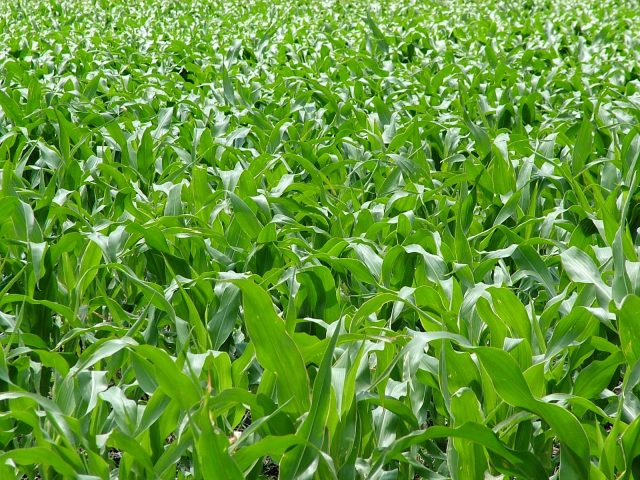As is the case with conventional agriculture, farmers have to use specialised planting machinery to ensure correct seed placement and depth.
Richard Findlay from the No-till Club of KwaZulu-Natal, explains that one of the major differences with no-till planting is that planters should be able to cut through mulch or crop residues left on the land and place seeds just under the soil surface.
Findlay says a good rule of thumb is to ensure that the seed is covered by 2 ½ times its diameter.
DEALING WITH RESIDUES
- In no-till farming, crop residues are left in the fields as soil cover.
- At the start of the next cropping season fields aren’t ploughed at all.
- Instead of ploughing before sowing, the seed and fertiliser are sowed directly in the stubble of the previous crop, at the correct depth for the crop in question.
- This means that the soil is worked only once, reducing the cost of cultivation.
- Besides reducing mineralisation, erosion and water loss, the surface cover also inhibits the germination of weeds, protects micro-organisms in the soil and helps build up organic matter.
- The results are less time and labour spent on land preparation, lower fuel consumption and less air pollution, reduced need for chemical inputs, and increased yields and farm income.
- Management of the residues is important and starts when the crop is harvested.
- Farmers should set the speed of the harvester to even out the land area.
- A very thick residue layer may affect seed germination, but an approximately 2 cm layer of mulch won’t affect the germination process negatively.
PLANTING
For the crop farmer, seed is one of his most expensive inputs, and successful planting will ensure a good return on investment. Farmers should seek good advice about proper seed placement ahead of planting.
“WITH PLANTING, YOU ONLY HAVE ONE CHANCE TO GET IT RIGHT. THE TRACTOR OPERATOR MUST BE VERY AWARE OF SPACING AND MATCH THE SIZE OF THE SEED WITH THE PLATES IN THE PLANTER.”
- Farmers should use the best technology available to ensure that the placement of seed and fertiliser is accurate.
- Planting depth can also be determined with precision by adjusting the angle of the planter.
- After planting, look after your seed.
- Keep the land free from weeds and diseases that could be caused by residues left in the field.
- Moulds, build-up of root diseases and fungicide problems are some of the most common challenges.
- Cutworm is also a problem in no-till farming, because it is not eradicated by conventional methods of turning the soil.
- This is why a crop rotation system has so much value.
- By rotating crops, the soil is given an opportunity to recover.
- Crops that place nitrogen back into the soil, such as soya or beans, could form part of the crop-rotation programme.
Research published by the Federation of No-till Associations in Brazil (FEBRAPDP), confirms that some crop diseases increase under no-tillage.
For this reason it is not advisable to practise no-till farming in monoculture. Generally, a well-balanced crop rotation system, together with the use of green manure crops, is sufficient to neutralise this negative aspect of no-tillage.
The research found that when it comes to pests, no-tillage could have positive or negative effects, depending on the specific pest and climatic conditions.
Farmers will find that the diversity of insects and spiders increases under the mulch-covered soil, where conditions are more favourable for reproduction. This causes many useful predatory insects to live in the soil, creating a better biological equilibrium where pests are controlled.
COMPACTED SOIL
- Farmers who have recently converted to no-till farming might experience problems with compacted soil.
- One of the solutions is to use a strip ripper to loosen the soil in land preparation before planting.
- This machine doesn’t destroy the mulch on the soil surface, but merely spreads it more.
“A STRIP RIPPER WILL HELP TO FAST-TRACK THE NO-TILL EXERCISE.”
- Once the strip ripper has been used, farmers can continue as usual with seed placement using a planter.
- Interviews with farmers from Brazil, as published by FEBRAPDP, revealed that the best way to avoid compaction is to produce maximum amounts of soil cover, and to use green manure cover crops and crop rotation.
- This will enable roots and biological activity, as well as earthworms and insects, to loosen the soil.
- Good soil cover will maintain higher moisture content on the soil surface, which will lead to better penetration of seeding equipment.
THE RIGHT MACHINERY FOR THE JOB
- Farmers must carefully inspect the design of the planter being used.
- All planters should have accurate seed- and fertiliser-metering mechanisms, but a planter suited for no-tillage must also be sturdy and heavier than conventional planters, and must be able to break through the soil and cut through residues.
- Check whether the coulter on the planter suits the farm’s soil conditions.
- A coulter can either be straight (smooth) or flailed (ragged).
- In wet conditions, for example, a smooth coulter will affect germination negatively.
TINE SEEDING SYSTEMS
- Tine seeding systems are used like a finger to open furrows.
- One of the drawbacks of tines is that they can also rake the mulch.
- This could create moderate to very high soil and residue disturbance.
- As is the case with all equipment, its effectiveness depends on the area in which it is used.
“FARMERS ALWAYS HAVE PREFERENCES. BEFORE BUYING, DISCUSS YOUR PLANTING NEEDS WITH THE MACHINERY SUPPLIER AND NEIGHBOURING FARMERS.”
LIVESTOCK IN A NO-TILL SYSTEM?
Some farmers incorporate cattle into a no-till system to graze on crop residues. However, Francisco Lafuente believes this is not productive.
“One thing that farmers have to remember is that they shouldn’t graze plant stubble or residues on the land,” he says.
Stubble forms the building blocks of the soil, and grazing removes valuable nutrients from the land. Cattle will also compact the soil.
USING LESS MACHINERY
Francisco Lafuente points out that no-till farming can be much more economical and requires lower capital investment. The FAO also confirms this.
- This article was written by Wilma den Hartigh and first appeared in Farming SA.

